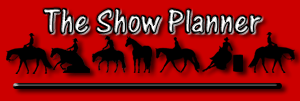Worm Facts
Pinworms: Pinworm eggs are picked up by horses from contaminated feed, water, or bedding. These worms are irritating, causing the horse to rub its tail, resulting in hair loss and sometimes injury to the tail and rump.
Bots: Bots are the immature maggot stages in the life cycle of the bot fly, the adult of which resembles the honeybee in general appearance. The females lay their eggs by attaching them to the hairs of the front legs, throat, and under line. As the horse licks itself, the larvae attach themselves to the lips, tongue, and burrow into these tissues. After about three weeks they attach themselves to the lining of the stomach, where they may remain for several months, causing additional damage.
Large Strongyles (Blood Worms): Adult strongyles are found firmly attached to the walls of the large intestine, where the females pass large numbers of eggs into the manure. These eggs hatch and the larvae climb blades of grass and are swallowed. The larvae then migrate to
the large arteries, which supply the intestines. As the artery walls are damaged, blood clots form and break away, causing colic.
Ascarids (large Roundworms): The adult stages of the large roundworm is found in the small intestine, where the female passes large numbers of eggs into the manure. In about two weeks, these eggs become infective and the horse picks them up while grazing. The larvae migrate into the blood vessels and are carried to the liver and lungs. The immature worms are coughed up and swallowed, maturing in the small intestine to complete the life cycle.
Rotation Deworming: Veterinarians recommend deworming every two months
Benzimidazole - Panacur Paste, Anthelcide EQ
Pyrantel - Rotectin 2, Strongid Paste, Equi-aid
CW, Strongid C Equine Wormer Pellets
Ivermectin & Moxidectrin -
Agri-Mectin, Equimectrin, Zimecterin, Quest

© 2000 - 2010 Show Horse Promotions
All Rights Reserved
Privacy Statement

The Show Horse Promotions web site is an informational web site, this information is subject to change without notice. Any use of, or actions taken based upon any of the information contained on this web site is done entirely at your own risk.
Show Horse Promotions expressly prohibit you from republishing or redistributing this content without first receiving
our written consent. By using this site, you agree not to hold us liable for
any errors or delays in this content, or for any actions that you take in reliance thereon. This site contains links
to other Internet sites. These links are not endorsements by us of any products or services in those sites, and we have not
endorsed or approved any information in those
sites.

